In recent years, black and grey have emerged as dominant exterior colors in residential architecture. This shift may be more than a passing trend and it may reflect deeper cultural values, psychological needs, and a renewed connection to history.
Why Black and Grey?
According to home design experts, a surge in black and grey houses coincides with growing desires for sanctuary. In particular, millennials and younger homeowners gravitate towards monochromatic exteriors as a reaction to the unpredictability of modern life. But let’s be honest…there’s more going on here than design trends. There’s cultural baggage, rebellion, and a little generational angst.
Why do millennials obsess over grey like it's the answer to life's problems? When you're juggling student loans, avocado toast guilt, and existential dread, the safest color choice is naturally the one that screams "I'm sophisticated but emotionally unavailable" — except on Instagram, where that grey interior creates the perfect backdrop for carefully curated pictures of overpriced lattes and struggling succulents.
After growing up drowning in loud wallpaper, shag carpets, and endless knick-knacks in their parents' homes, millennials decided to rebel by embracing the exact opposite aesthetic. Enter the temple of doom aka Restoration Hardware that has convinced an entire generation that if their living room isn't bathed in Fifty Shades of charcoal and concrete, they're somehow failing at adulthood.
While millennials might think they've discovered something revolutionary, black is a design tradition that spans centuries and the "modern" rebellion is, ironically, centuries old.
Shades of the Past
Throughout history and across continents, dark-colored houses have held both practical and aesthetic significance. In colonial America, painting houses was uncommon—sometimes even frowned upon for appearing showy—so unpainted wood was left to weather naturally, darkening into rich browns and silvery greys.
In Japan, the technique of yakisugi involves charring wood to make it more resistant to fire, pests, and rot resulting in dramatic blackened façades that are both practical and striking. In Denmark, fishermen’s lodges and rural barns were traditionally coated in black tar or preservatives, a choice driven by both durability and the desire to blend harmoniously with the rugged coastal landscape. In Scandinavia today, this aesthetic endures not just as a nod to the past, but as a modern embrace of simplicity, contrast, and harmony with nature.
In the 19th century, Gothic Revival homes sometimes featured darker trims or even full dark exteriors to emphasize drama and verticality especially in forested areas. Even in interiors, such as those in Greek Revival homes, muted greys were used to mimic stone; an early nod to the calming, grounded appeal of dark neutrals.
The Rise of the Black House
Black and grey exteriors surged in popularity throughout the 2010s and 2020s, especially in new builds and renovations that embraced modern farmhouse, barn-style, and urban infill aesthetics. Social media, architecture magazines, and the influence of minimalist design helped shape these design choices.
But the appeal goes deeper than surface style. Black buildings establish a unique relationship with their surroundings. In forested settings, dark exteriors recede, allowing nature to dominate. Against winter snow, they create high-contrast, sculptural forms. In urban areas, they project confidence, edge, and sophistication.
This resurgence of dark exteriors isn’t just an aesthetic phase—it reflects deeper psychological and cultural shifts. Black conveys power, protection, and a sense of retreat from the chaotic outside world. Grey, often associated with neutrality and introspection, is the color of sanctuary. Together, they embody a desire for control, calm, and identity especially in a post-pandemic era when homes have become both refuge and reflection.
Moody Tones, Higher Prices?
Black houses carry complex cultural associations ranging from elegance and prestige to darker connotations of Halloween, witch trials, or villainous lairs from popular cinema. Even today, these dramatic color choices can elicit mixed reactions; some love it while others find it unsettling.
Real estate sites like Zillow seems to imply a trend towards darker hues including gray and black. Data from Sherwin-Williams shows that dark hues like Tricorn Black, Peppercorn, and Urbane Bronze remain among the most purchased exterior colors, second only to classic white, indicating sustained demand for bold exteriors. According to Zillow’s data, homes with front doors painted charcoal, smoky black, or jet black have sold for up to $6,271 more than expected.
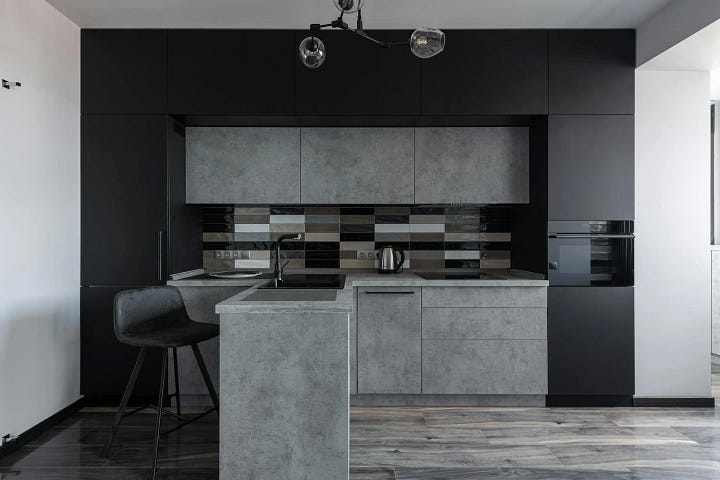
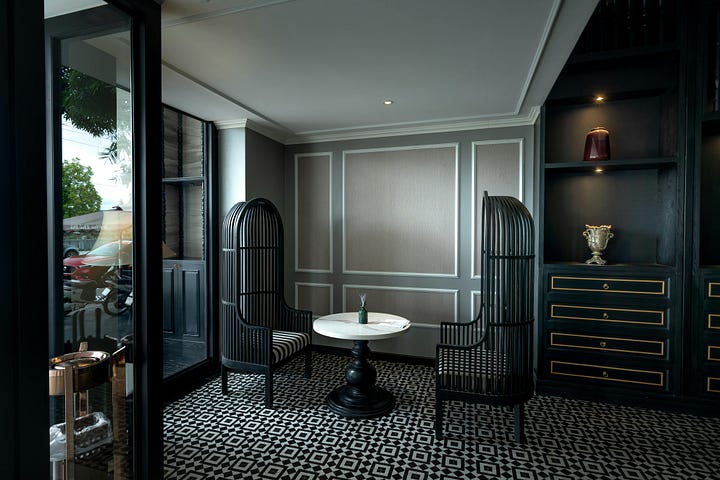
Darker hues, especially in kitchens also tend to perform well, adding visual interest and perceived value. Grey, particularly in bedrooms and bathrooms, is associated with higher offer prices, as buyers seek out calming, retreat-like spaces.
Looks Great until…
Choosing black or grey is more than a color preference—it’s a strategic decision that is at the intersection of a home’s character, curb appeal and market perception. If you’re considering joining the dark side, weigh the pros and cons carefully: the right shade and context can elevate your home’s value and style, but maintenance and neighborhood reactions are important to consider.
Dark paints fade and peel faster than lighter ones, especially in sunny climates, requiring more frequent upkeep.
Black and dark grey exteriors absorb more heat, which can be beneficial in cold climates but problematic in hot ones.
Dark colors can hide architectural “flaws” or irregularities, making them popular for renovations or additions where seamless blending is desired.
Conversely, black can emphasize imperfections in the paint job or siding, requiring careful preparation and higher-quality materials.
Black and grey houses create striking contrasts with greenery, flowers, and snow, which looks dramatic against a dark facade.
The interplay of light and shadow on a black or grey exterior can create dynamic visual effects throughout the day.
The trend of painting houses black and grey reflects a convergence of aesthetics, psychology, historical precedent, and shifting market dynamics. As exterior color trends for 2025 move toward warmer neutrals and earth tones, black and grey remain relevant for homeowners seeking a distinctive, enduring look.
If you enjoyed the post, take a second to answer the quick poll, leave a comment, or share it with someone who’d appreciates a dark facade. I’d love to hear what you think!
Related Content
How Surroundings Impact Color
Have you painted a room and then realized it looked all wrong? Relying solely on color palettes can sometimes lead to frustrating results. I wanted to share the information that gave me a bit more insight and control over the process.
Queen’s Repository
The most popular dark colors for house exteriors include a range of blacks, charcoals, and deep grays that offer both dramatic appeal and versatility. Here are the favorites
Benjamin Moore
Black Satin 2131-10: A rich, sleek, classic black making it a strong choice for modern, bold looks.
Black HC-190: This is a balanced, neutral black with subtle cool undertones, offering sophistication and versatility for a range of design styles.
Kendall Charcoal HC-166: A dark slate gray with a slight green undertone, Kendall Charcoal is a favorite for those seeking a moody, modern look. It pairs well with both warm and cool shades.
Dragon's Breath 1547: A deep, dark gray-brown that brings drama and richness to any space, suitable for those wanting a bold, dramatic effect.
Sherwin-Williams and other brands
Iron Ore (SW 7069): A deep, cool charcoal that lends sophistication, often used on exteriors for a dramatic effect.
Black Magic (SW 6991): A warm black praised for its versatility and ability to add coziness and contrast.
Peppercorn (SW 7674): A deep charcoal gray, often described as a soft black. It provides a strong presence without feeling too intense.
In addition to pure blacks and charcoals, dark blues and deep greens that verge on black have also gained traction. Shades like Onyx, Graphite, and Wrought Iron by Benjamin Moore strike a balance between boldness and subtlety, with many homeowners appreciating how these colors draw attention to landscaping and architectural details.


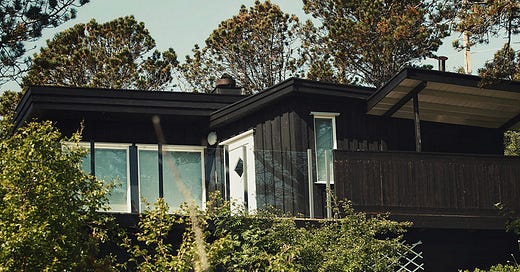



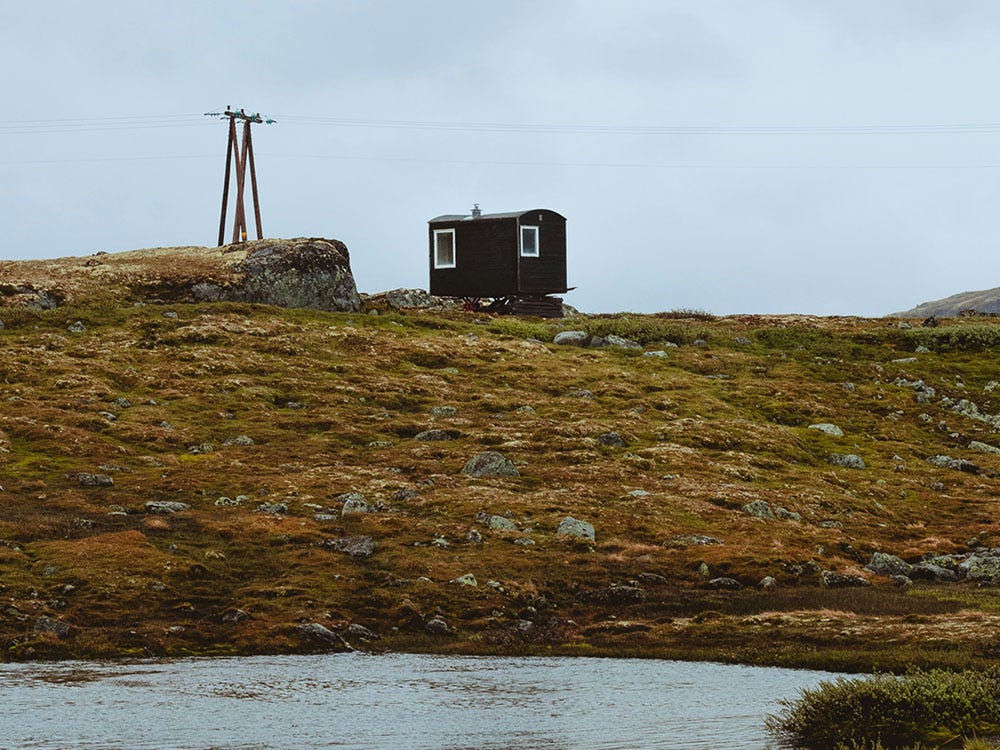



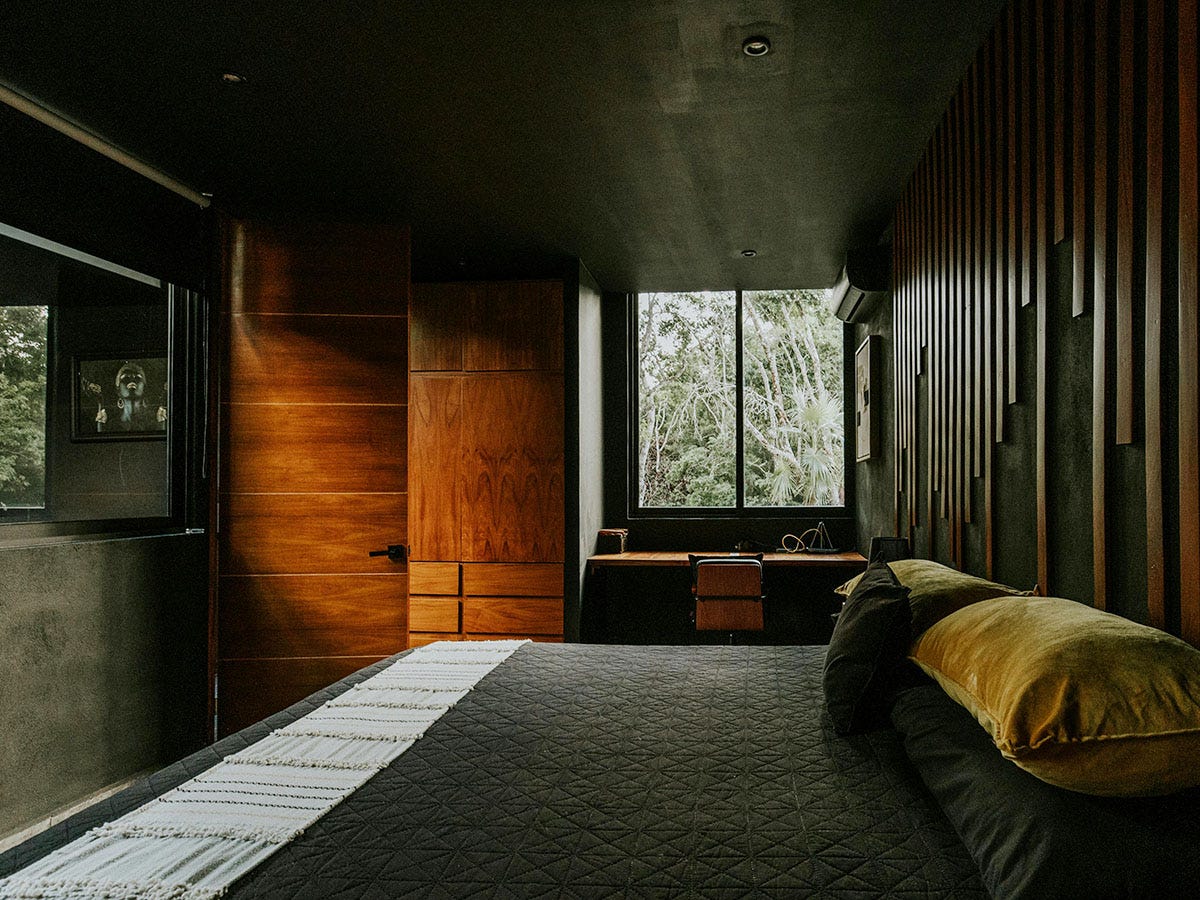

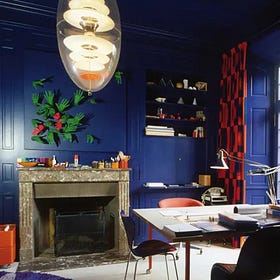
This is hugely interesting! I had no idea about all this history. Personally, I reeeeaaaally dislike this new black aesthetic and grey is just boring to me. As is all beige. Feels like the walking dead. Or a flat line on an EKG machine. If you don’t have some color, where is your passion in life? Dull colors-dull people - dull life. Trying not to be judgmental but… I appreciate what you said about Restoration Hardware. And before that, it was Crate & Barrel. Alas.
But the fact that these homes sell for more- even if it’s just the door- wow. Just wow.
Having just built a house and chosen dark gray siding, I have some insight. In our case, we have a dislike of bright reflections and since we spend a lot of time outdoors working in the vegetable garden that abuts the southern side of our home we didn't want to be continually blinded by the sun bouncing off light-colored siding. Then from an aesthetic perspective, as photographers we felt that dark gray would be a better backdrop for any photographs from within our garden or property (in both summer or winter). The house definitely looked great in the snow. We did have some concerns that dark homes were a trend that would pass, but I don't think we hold those concerns anymore. We're very happy with our choice!